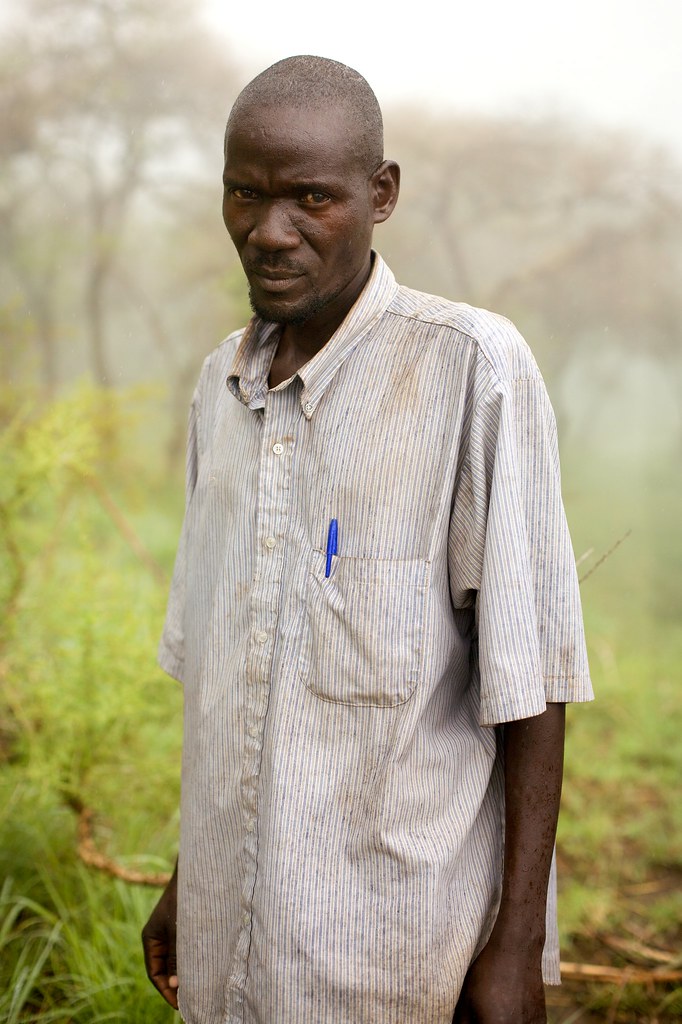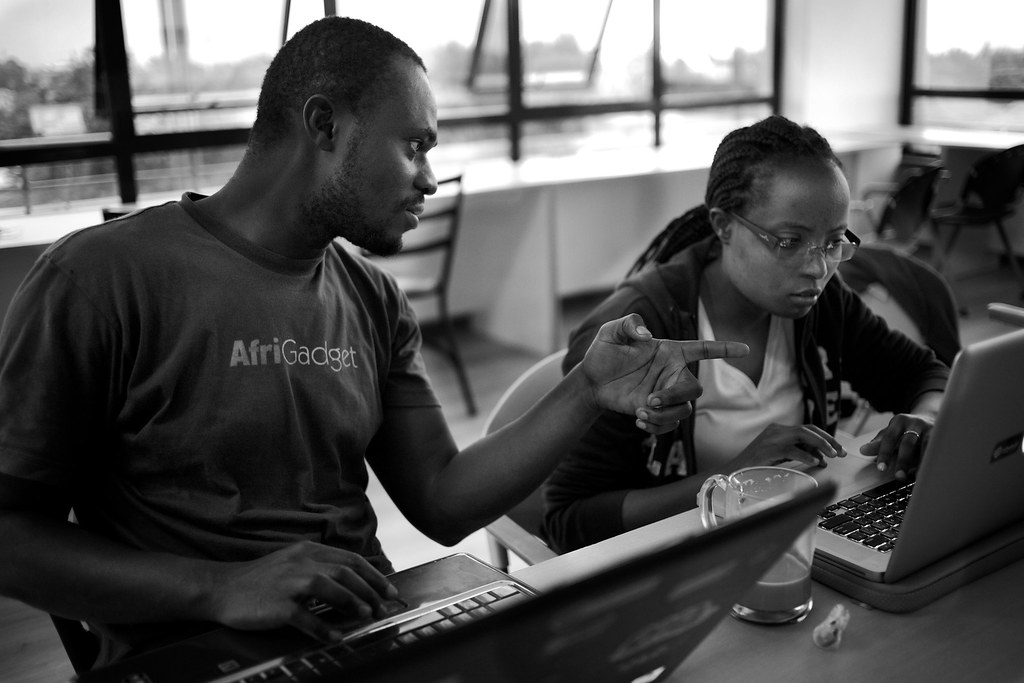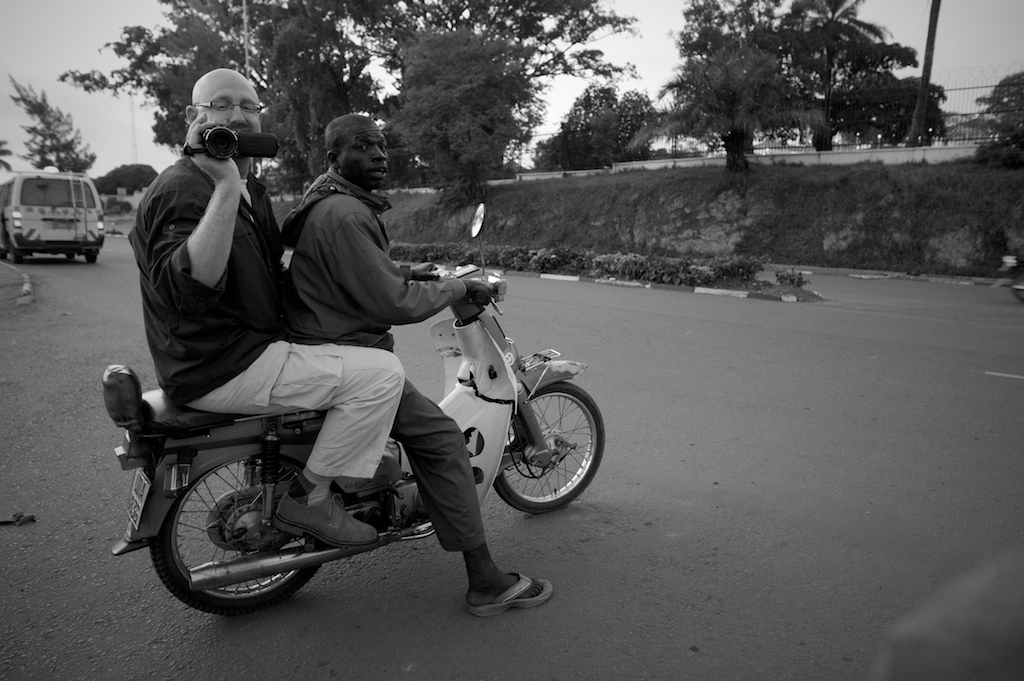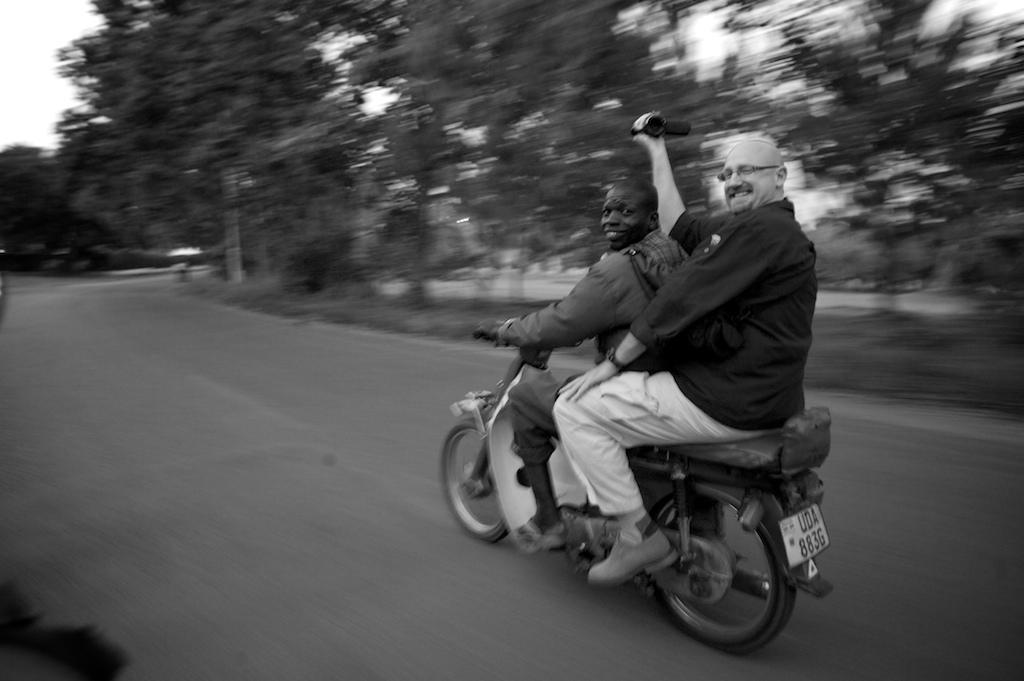[col-sect][column] As I’ve worked at becoming a storyteller, I’ve realized that we all wear uniforms. Uniforms are born out of function and as a series of visual signals to the people around them. A police officer’s hard pressed shirt, the patches on a punk rocker’s vest, the sarong of an Indian worker,,these all mean something to people who are part of the uniform’s culture.

In most cultures I work with, men wear button down shirts if they can. It’s a visual indicator that one has a job to do. This might sound shallow in our culture, but it makes a difference in other places. I was in the Democratic Republic of Congo a few years ago working on a story with a team including my boss, a writer, and a marketing specialist. My boss was a man who carried himself as one who was in charge. In the states, no one would ever question if he was running the show despite the fact that others might be more dressed up than he. He had only packed tee-shirts for the Congo trip because it was staggeringly hot and he wanted to be comfortable. When our contacts or a subject wanted to deal with us, they never came to him, they always came to me or the marketing guy. When it became a problem we started asking people why they didn’t come to our boss with stuff. They just assumed we where in charge because we were dressed like professionals. The only difference was a collard shirt.
I find that I choose my uniform in the field based on two things: credibility with my subject and enough comfort to avoid distraction/fatigue. For me this means a buttoned-down collared shirt that breaths well, does not wear sloppily, and offers some protection from the sun. I have three that I really like for different reasons; I usually bring them all on a trip with me.
The Dress Shirt (or the Airport Survival Shirt)Call me old fashioned, but I’m of the opinion that everyone should have one or two fitted shirts at their disposal. They don’t have to be expensive, they just need to fit well, not wrinkle easily, hold up, and breathe decently. My nicest shirt is usually the one I’m wearing on the plane. Not only does it come in handy when you have issues with your airline (something for a different post) but at the end of the day, you don’t know what you might be invited to or want to cover while in country. It’s important to have something that works.
I like the basic oxford from Lands End and the Nordstrom Smartcare Traditional Fit Pinpoint.[/column]
[column]
The Travel Shirt
Ah, the Travel Shirt. Is there anything that says “Western Traveler” quite like a travel shirt? These synthetic wonders evolved from shirts made by outdoor outfitters who specialize in safari hunts and saltwater fishing. And they look it. With their billowy, tent-like structure, their endless pockets, and their promises of mosquito, bacteria, and sun repellent it will be clear to everyone around you that you are not from around here––and that there is something about “here” which makes you a little nervous. I find that they make me look like I do not care to respect my subject by dressing appropriately.
The problem is that they are really useful. They wash easily, dry quickly, and usually breathe really well. The only protective feature I care about is UV: mosquito proofing only works if you are keeping everything buttoned up.
The best ones I've used are from REI, Royal Robin looks to have some decent ideas as well. I’m not a fan of Exofficio for the reasons mentioned in the above paragraph. They are so light weight that they are flimsy and look sloppy. Just make sure you are picking a color that isn’t ridiculous and that it fits mostly like a normal shirt.
The Patagonia A/C shirtShort sleeved, breathable, easy to wash, comfortable on the skin even wet.
The Patagonia AC shirt is probably the best short sleeved, lightweight field shirt I've used. It offers less in the way of UV protection, but oh man, it is so comfortable. You really do feel about 5 degrees cooler with it on.

I Instead of a synthetic material, it uses a cotton weave that pulls sweat away from the skin and allows wind to move through with little effort. At the same time it hangs really well and wrinkles fall out of it quickly.
[/column][/col-sect]









